|
I write this from the Atlantic Ocean underway to French Guiana. Days 1, 2 and 3 As usual, the first couple of days of sailing are a bit of a struggle as we settle into watches and I get seasick. At this stage it's a lot better, I just get through the motions of it. We had an eventful first three days at sea. It felt like we were spat out of Mindelo, through the acceleration zone between the islands of Sao Vicente and San Antao. That evening, we could hear a clacking noise coming from the mast base in the saloon. A new noise we hadn't heard before. The noise continued as we sailed 50 or so miles away from Mindelo. We slowed the boat down and discussed what our options were, as we didn't know if there was damage to our mast. We could either go back to Mindelo (a hard beat to windward into a force 6 or 7, with steep seas and the current against us, with what might be a dodgy mast), and try to find somewhere to pull the mast so we could investigate, or we could continue to sail south and stop at the next island, which was Brava. There are no marinas or yard there, but we could at least stop the boat. The other option was to continue sailing and investigate/reinforce it whilst underway. We decided to continue sailing, but we reduced sail and were now sailing at 3 knots instead of 6.5 knots. Mattis thought it could be the join between the two sections of the mast. Or rather, the sleeve inside joining them, moving slightly as the boat rolled. Mattis decided to reinforce the mast below decks with an epoxy GRP sleeve. This took him at least a couple of hours. It was the first time working like this underway. The last thing we could think of where the noise could be coming from was from the mast step (the step is usually a piece of wood sat on the keel, with a metal fitting fastened to it). Talking to other owners of Contessa 32s, we'd been told that the mast step is made of balsa wood (a soft wood) covered in fibreglass, and that it is prone to rot and compression issues. Mattis didn't think this sounded right. He wanted to investigate the mast step, but before drilling holes to see if it was waterlogged, Mattis wrote an email to Kit Rogers via our satellite communication device. Kit is the son of Jeremy Rogers, the original builder of the Contessa 32, and now runs the boatyard. In the meantime, Mattis continued working and wrapped a jubilee clip around the base of the mast and tightened it as hard as he could. This alone stopped the clacking noise! Thank goodness, we were running out of ideas. Kit wrote back and let us know that all of their mast steps are made out of a solid grp laminate. Therefore, there should be no issues with compression. Kit was great and reassured us straight away. It was brilliant to know that even underway and at 2200 UK time, we were able to get advice. On the second day of our passage, there was very little noise coming from the mast. And on the third day, once our strength was back up, I hoisted Mattis up the mast to check on a creak (from a halyard sheave), and to give the rigging a once-over. Day 5: Thursday 11th January 2018 I'm currently on watch and Mattis is taking a rest, reading a book down below. I write this whilst listening to Herbie Hancock. A friend asked me a while ago if I've had any tricky moments since we've left. What scares me the most is when we're on our night watches. I worry that Mattis might not be there when I wake up. For example, if he falls off the deck when checking something. The more experience I get with each passage, the more I realise what can go wrong. Sadly, it can and has happened, where a partner has woken up and their other half wasn't there anymore. The person off watch would have no idea what time it happened or which direction they had gone. Luckily, we're always clipped on no matter where we are on the boat. Our number one rule is no going overboard. Day 6: Start of Friday 12th January 2018 (0100) We've started doing 6 hour watches, which are suiting us much better than the 4-5 hour watches we tried at the beginning of the passage. We get more rest, which is really important. I like going to bed early and Mattis tends to go to sleep later than I do, so we worked out the following: 0600-1200 Mattis 1200-1800 Mo 1800-0000 Mattis 0000-0600 Mo Then the same every day after that. On our off-watches, we didn't use all of that time for sleeping. We'd spend a lot of time together in the cockpit or on deck, or cooking, cleaning, reading, fishing... For this passage, we replenished our food stocks with fruit, vegetables and eggs. We'd bought all of our dry goods from the Canaries, as apparently it gets harder and more expensive to buy dry goods once you leave there... We bought: 50 Granny Smith apples (last forever) 2 large squashes 2 bunches of green bananas 8 clementines 5 kilos of potatoes 1 kilo of sweet potatoes 4 trays of eggs 2 kilos of onions 1/2 kilo of garlic 2 large watermelons A friend we'd met, Ally, told us that melons keep for a long time if you don't open them. They're nice to have especially when it gets really hot during the day. It's been getting warmer and warmer every day since we left Mindelo. We were hoping to catch more fish this time and we have been fishing, but there's so much sargassum seaweed out here that the lures get caught in it. They drag the weed and eventually break off under the weight. We've lost two lures so far. We're going to leave fishing until there's no more sargassum. At times we see so much out there, it's like carpet floating on the water. Yesterday, we saw our first whale. We were chatting away in the cockpit and I saw this huge black mass diving back in the water, making a mammoth splash. Out of nowhere. We stared to see if the whale was going to do it again and it did, twice, leaping clean out of the sea. It must have seen our hull under the water. Not sure what kind of whale it was, but it was definitely larger than our 10 metre boat. This was the first animal that we'd seen so far, apart from flocks of flying fish and birds. No dolphins yet. 0300: As I was writing for our next blogpost and keeping watch, I was looking up at a constellation, the Big Dipper, and I heard a 'BANG'! A 12" flying fish happily flying through the air had hit our boat. I was looking around thinking 'what's broken off?'. I turned on my headtorch and put him back in the water. 2 minutes later, another one needed saving. This seems to happen a lot more during the night than the day. I suppose they can't see out of the water very well (and in the dark). Day 7: Saturday 13th January 2018 Watermelon Day! And half-way day! We opened our first watermelon and it was amazingly fresh. We checked the distance we covered yesterday at noon and we had sailed 152 miles in 24 hours. Our quickest yet and today, still steaming ahead, we were doing 9.5 knots surfing down the waves. Our top speed so far. Day 9: Monday 15th January 2018 Since around Day 6, the days and nights have been flying by. We've gotten used to our watch system and have a routine. We're really enjoying being at sea! Day 10: Tuesday 16th January 2018 30 flying fish landed on our deck overnight. This was many more than the 5 or so we'd normally get in a night. We'd save the ones we could hear flapping around in the dark. There was a new moon tonight (no moon), maybe that had something to do with it? Day 11: Wednesday 17th January 2018 For the past few days we'd been sailing around 140-150 miles each day. Yesterday, we covered 90 miles. It felt like a lot more, but after checking the pilot atlas (a 1998 edition of "Monatskarten fuer den Nordatlantischen Ozean" that we found by the marina skip in Tenerife, it is full of useful information and amazingly detailed), we found that the Guyana Current has an eddy that reverses its direction in the region we were crossing. So we were stemming a 1.5 knot current. It looks as though we'll be in the eddy for the next day or so, but once we get nearer to the coast of South America, the current should sweep us along to French Guiana. Day 12: Thursday 18th January 2018 We're currently 5 degrees north of the equator. As each day passes, we get more and more thirsty as it gets hotter out here. At the moment it's about 30 degrees celcius. I've been reading a new book every couple of days and I didn't realise how much I missed reading. With so many screens in front of us all the time at home, it's easy to stop picking up books. The last fiction novel I read happened to include a lot of astronomy and I gazed up a lot on my night watch, figuring out which constellation was which. On this passage, the Big Dipper has kept me company most of the time. I liked seeing how the angle of the 'handle' twisted slowly through night, circling round Polaris, the north star. Last night on Mattis' watch, a seabird landed above him and made itself comfortable sitting on the boom. It was quite happy there, its head nestled into it's wing, sleeping. As we were swapping watches, we noticed another bird of the same species was also trying to land. It hadn't quite grasped that it couldn't land on the swinging Hydrovane. Eventually, it settled on the boom as well. Slowly through the night, the second, more vocal seabird decided to edge the other bird right off the end of the boom until it flew away. Lots of bird poo on our sprayhood by the next morning, but it was nice to see how sociable the animals are out here, even in the middle of the Atlantic. Today was one of the more peaceful days on the water. Slowly gliding along at about 3 - 4 knots. Much calmer and quieter than our faster days. It's Friday tomorrow, which means that our Atlantic crossing is coming to an end soon. Part of us feels as though we can't wait to get there and part of us feels as though we don't want this passage to end. We've gotten used to the life and routine on the water, that we'll definitely miss it when it ends. Day 14: Saturday 20th January 2018 Well today is our last full day at sea. We hope to be in Cayenne, French Guiana tomorrow at around 0700 local time (+3hrs UTC). So far, we were under twin headsails all the way across the Atlantic. To increase our speed for the last 120 miles, we gybed the genoa and hoisted the mainsail. We're now in a wind-driven ocean current called the Guyana Current, which has been whisking us west along the coast of Brazil towards French Guiana, giving us a speed of 7-8 knots. We could see something flashing at the end of our fishing line once we changed sails. It was a bonita (tuna)! We let it go as it was too big for us. Shortly after, we were up on the foredeck admiring the view and we could see 3 birds of prey near our line. We'd caught a king mackerel. We kept this one and had it for lunch. This has by far been the best day. Gorgeous warm sunshine from morning, smooth, glassy waters, fast sailing (never below 7 knots) and catching fish. We couldn't have asked for a better day's sail. We've been lucky, sunshine all the way with very little rain or squalls. Day 15: Sunday 21st January 2018
Sailing more quickly than expected we arrived in Cayenne 5 hours early, in the middle of the night. The glow from the city illuminated where we needed to go. We motored in as we got closer to the anchorage. We knew low water was at around 0200, and that we would struggle to find a way in that was deep enough, especially as the charts are not very reliable in this area. However, the charts say that the bottom is soft mud, so we weren't too afraid of running aground, especially on a rising tide. Our draft is 1.65 metres. By the time we'd motored as far in as the buoys for the entrance of the anchorage, the water depth was 1.7m, 1.6m then 1.5m... We thought do we chance it as the rising tide would float us off again if we got stuck. We braced ourselves for a sudden stop. I was at the tiller and was trying to go to port, but I had no steerage. No more movement. We'd gone aground. It was so subtle, we hadn't even noticed. Mind you, the depth sounder was saying 1.0m now. It was after 0400, so we anchored where we were, tidied up, got our bed together and slept a little, until 0700. We woke up close to high water and motored to our anchorage, only 5 minutes away. But we are here now! We're looking forward to no-frills canteens and cafés, simple tables with paper tablecloths, random photos, food served in paper trays. Though from what we read in the pilot book, Cayenne, French Guiana, is just like France. Can't wait to see it. Highlights of this passage – Warm winds! Didn't mind being covered in dew during our night watches as the air and wind were warm. It didn't feel as though the dew was freezing on you this time – During the day, we were just in swimwear and our lifejackets – At night, we were wearing one layer instead of the seven we wore when we first set sail for Portugal back in August – Having a cockpit bath and feeling fresh in the midday sun – Lots of fresh fruit to keep us going – Faster days, 150 mile days with the trade winds blowing us to South America – Nothing else went wrong with the boat, apart from the first day – Catching different types of fish – Seeing a whale leap up into the air – Having guidance from our good friend Grahame back home in England, giving us regular weather reports on wind and swell. Thank you Grahame for all your guidance! We sailed 1800 miles, across 2 time zones, in 15 days. It has been the most enjoyable sail we've had out of our 7 passages so far. Trade wind sailing, warm winds, being the only ones out in the ocean for hundreds of miles around and letting our sails carry us to South America has been mind-blowing. You only get to cross the Atlantic for the first time once! What's Next? After Suriname and Trinidad, we hope to continue north. Explore more of the Caribbean and then... head through the Panama Canal and into the Pacific Ocean. We've been talking a lot about what to do, whether we just do the Atlantic Circuit and come home, or go through the Canal and explore the other side? The time is now and we've decided to do it. This passage was 1800 miles in 2 weeks. Once we go into the Pacific one of our first passages will be 3000 miles. We can do it!
2 Comments
We planned to leave Santa Cruz, Tenerife on 4th December and sail to Cape Verde. A few days before our planned departure, the forecast showed the Azores High strengthening in the north. The Azores High, also known as North Atlantic High/Anticyclone or the Bermuda-Azores High, is a large subtropical semi-permanent centre of high atmospheric pressure typically found south of the Azores in the Atlantic Ocean. There were 30 knots of wind (sustained), with higher gusts. In addition, leaving Santa Cruz for Cape Verde means sailing in the acceleration zone between Tenerife and Gran Canaria, as well as the acceleration zone typically found off the south-east coast of Tenerife. Add in two separate swells and it would have made for an uncomfortable start to our passage. These conditions continued for the next 10 days, so we waited it out until we had fairer winds. Below are snapshots of the forecast for when we wanted to leave on the 4th. This was also when there was a cold snap in the UK and there was lots of snowfall... In the meantime, we needed to get malaria tablets for when we go to Suriname. We went to several 'centros de salud', which is the equivalent of going to see the GP. We finally found the 'Centro de Vacunacion Internacional' (Centre for International Medicine). We walked about a mile to get there. It was a huge old building with two ladies sitting behind the reception. In our best Spanish, we asked to see a doctor who could give us a prescription for malaria tablets. One of the ladies answered in Spanish and asked if we had an appointment. We didn't. She tutted a little under her breath and after a few moments, she told us to take a seat. A couple of minutes later, the same lady showed us the way to the doctor's office and we sat down. She started speaking in perfect English and asked us where we were travelling to, what vaccinations we had already etc. We started laughing to ourselves as this lady was the doctor. She was really helpful and sent us in the right direction to collect our medication. Mattis also got a tetanus booster at the centre. On the other days, we re-bedded all of the portlights, took out the sliding door from the heads, painted the bilges and got the majority of our jobs done. We also visited a couple of places on the island, including Icod de los Vinos, where there is a famous dragon tree that is over 800 years old, and a black sandy beach in San Marcos. When wind conditions were back down to 15-20 knots, we left Santa Cruz on the 14th December and set course for the island of Sao Vicente, Cape Verde. This was an 850 mile passage and we planned for it to take us about a week. We averaged 120-130 miles a day and we had one day where we were becalmed, so we switched on the engine and motored. It was funny to see on our GPS tracker (InReach MapShare) how we were doing. When we used our wind steering system, the Hydrovane, our course was straight as an arrow. When we motored and hand steered, you could see our course curve in a banana shape, especially during our night watches. Below is our passage from Tenerife to Cape Verde.  We saw many extraordinary things on this passage; dolphins (these were much smaller than the previous pods we'd seen before), flying fish flying in groups of ten or twenty escaping from predatory fish. One morning when the sun had risen, we looked over our deck and ten flying fish had landed on it overnight. We sailed this passage on a new moon and the dark nights were lit up with stars. The shooting stars and light trails they left behind were astounding and we always looked forward to seeing the next one. I made many wishes :) Most nights we saw phosphorescence glowing beneath us as we were gliding through the water. One night, Mattis was on watch and he called me to come and have a look at the dark water beneath us. You could see the sparkling from our boat, but then all of a sudden you could see green flashes further away from us. It was almost as if there were networks of sparks that shot out green fingers of light. They were dolphins triggering the phosphorescence . We kept an eye on star constellations that we recognised. As they slowly moved from one side of the horizon to the other, we roughly knew what time it was. I loved looking at the constellation Orion and Mattis kept an eye on Polaris, the North Star, keeping it over our starboard quarter for the passage. With two more days to go before we approached Cape Verde, we said to each other 'why haven't we been fishing yet?'. So we got out our fishing line and threw it over the stern. When we were in Portugal back in August/September time, we met Frank, an English fisherman. Frank is such an interesting guy who fished for a living for decades and was very generous with his knowledge. Frank has had programmes made about his fishing for the BBC and worked alongside the likes of Gordon Ramsey. Word quickly got out and lots of people were asking Frank questions about fishing....what is the best kind of gear to use, which lures, how heavy should the line be, what is the best way to kill a fish?.... So, Frank held a 'fishing masterclass' on the pontoon one afternoon and everyone brought what gear they had. We had a fishing rod and a few lures, and that was about it. Following Frank's advice, we bought some skirted lures, a plastic yoyo, some monofilament line, and 15 feet of shock cord. Frank gave us some of his braided line to complete our outfit. On our way to Cape Verde we threw the line over the stern, and within about twenty minutes I could see flicking in the water. We had a our first fish! By the time we got our bucket untied and started hauling in, the fish had got away. A few minutes later we tried again and same thing happened. Third time, I kept my steely eyes on the line and Mattis caught our first fish! A mahi mahi. We'd never seen one before and it was a beautiful looking thing, glistening in the sunshine, green and yellow. It was a fairly small one, but a perfect size for the two of us. By day six, we were mostly eating apples, oranges, soup, boiled eggs, bran flakes, muesli and chocolate, so fish would be a welcome change. Just as Mattis was filleting the mahi mahi, I led the line back out, and a couple of minutes later we had another fish on the hook! I could see it was much bigger and it was shimmering bright blue. I hauled it in. Bringing it over the side was a challenge, but I managed it. We put it straight into the bucket and as soon as we saw it, we thought we'd release it. Firstly, neither of us wanted to kill such a magnificent creature, and secondly it was way too much for us to eat. We carefully released it and that was that, we didn't fish for the rest of the day. I was reading our fishing book and it explains that mahi mahi are naturally blue in the water, but when they get excited or stressed they turn a mixture of green, yellow and brown. I never would have thought that, as you always see green/yellow mahi mahi in photos. On the morning of the seventh day, we raised Sao Vicente through the haze. About an hour from shore, I was at the tiller and Mattis was on the foredeck. All of a sudden there was a huge surge from underneath, which sent me to the other side of the cockpit (we're always clipped on). Mattis shouts from the foredeck, 'Did you see that whale fluke?'! It must have come very close to us, it had probably just come up for air, and the displaced water caused us to heel. We arrived in Mindelo, Sao Vicente safe and sound and anchored in the area just south-east of the marina. Anchorages are wonderful floating communities and there were lots of boats from France and Scandinavia and the UK. We hopped in our dinghy and rowed to the floating bar at the marina, where you can park it and pay €4 for the day. Cape Verde to me is like Africa on an island. Having been to Zimbabwe and South Africa a few times, there's a distinct feeling of Africa, but so much of Portugal too. Portuguese is the native language here, so it was time to brush up on what we'd learnt a few months ago. We went to the customs and immigration offices just before they shut at 4pm and had our ships papers checked and passports stamped. On our first day, we had glorious heat and sunshine but for about a week after that the skies were covered in a haze. This haze is called harmattan, and it is the sand and dust that is brought over from the Sahara, usually in December. Christmas morning we were rowing to the floating bar. One of the other boats in the anchorage stopped us and told us to be careful as they had intruders on their boat at 0430 that morning. They said that they heard people boarding their boat, so they quickly got their torches out and started yelling as loud as they could. The intruders quickly scampered and the owners were not harmed. We reached the floating bar at the marina and met our friends: people who we caught up with from other countries and people we'd spoken to on the VHF on passage here. We all brought a dish each and had Christmas lunch together. All of us are heading across the Atlantic from here, to different countries. Many to the Caribbean, but also lots to Brazil, French Guiana and Suriname. Day out exploring the island of Sao Vicente, Cape Verde Mattis and I hired a guide for the day with Anne and Stefan of S/Y Zanzibar, a German couple we'd met. We learned just a few of the interesting facts about this island and Cape Verde...
Our Time in Cape Verde New Year Watches This trip was hard in terms of sleeping, or lack of. The past couple of passages, we had found a rhythm of letting each other sleep when we needed it, and it worked really well. On this passage we really struggled, both staying up too long when there was no need. We arrived in Cape Verde much more exhausted and grumpy than before, and it took us a good three days to catch up on sleep. We've decided to work out a watch system for the next passage (the BIG one) and stick to it. Crossing the Atlantic will take us at least two weeks and we want it to be the best one yet - it's only once you get to cross an ocean for the first time. From books and conversations it seems if we both get too tired, the best thing to do is heave to and both have a good rest before continuing. Proper watches and getting decent rest every few hours seems like the way to go. The table below is the watch system we are going to stick to:
The plan is to leave Mindelo, Cape Verde on Saturday 6th January. We have our minds set now on going to French Guiana, which is approximately 1800 nautical miles from here.
Follow us on our GPS tracker across the Atlantic, it's nice to know people are keeping an eye on us... MapShare Page |
Archives
November 2021
|
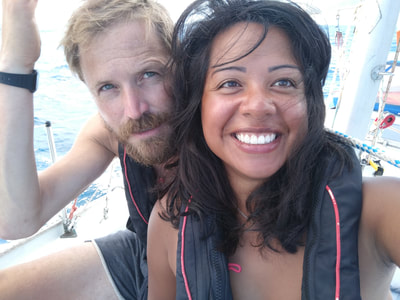
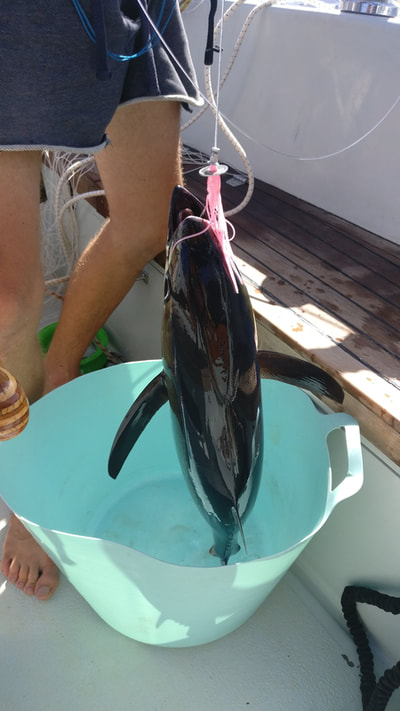

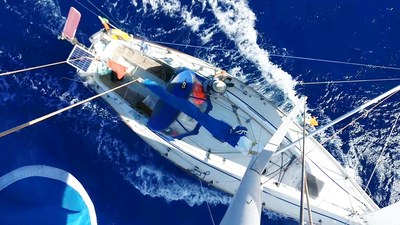

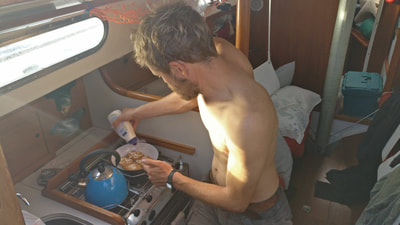

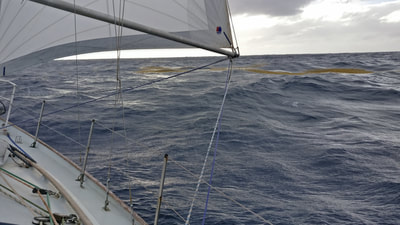


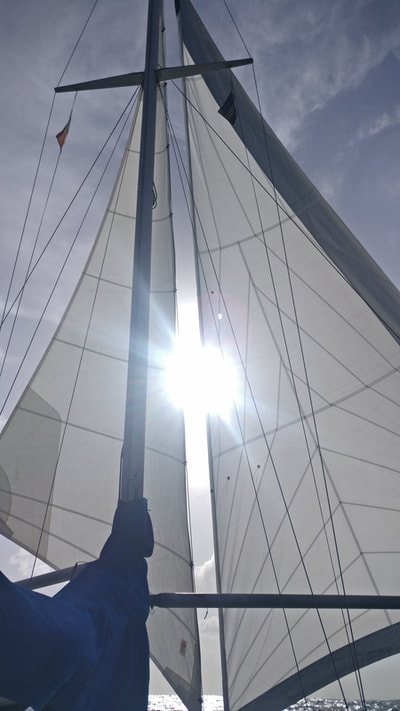

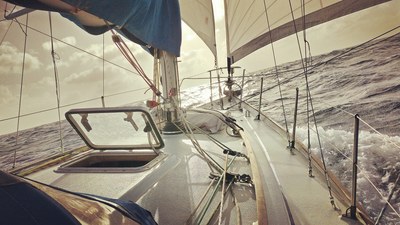



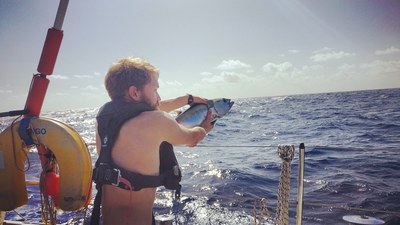







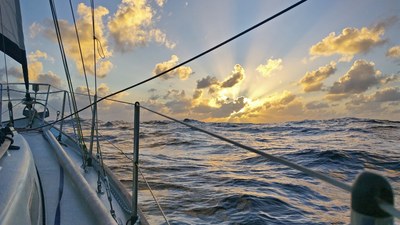

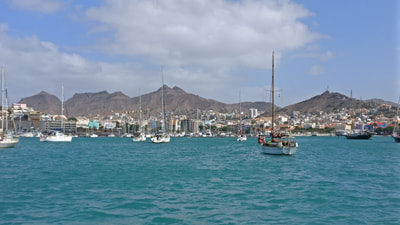
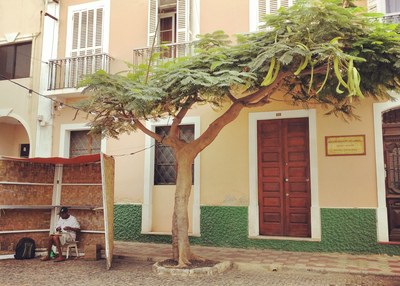



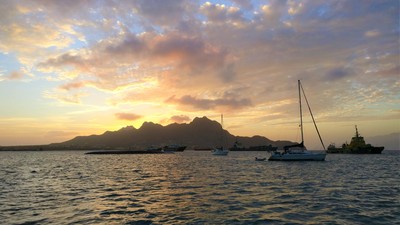

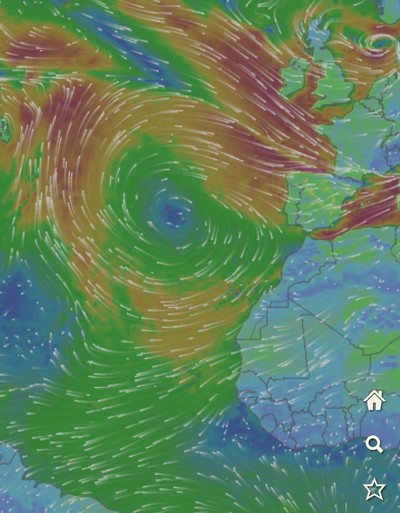

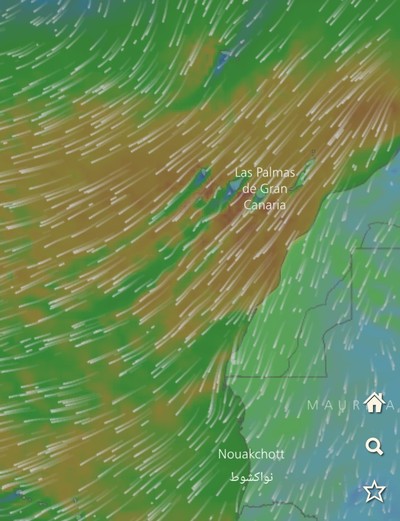
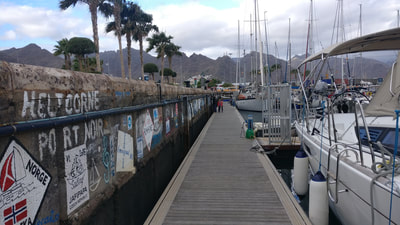
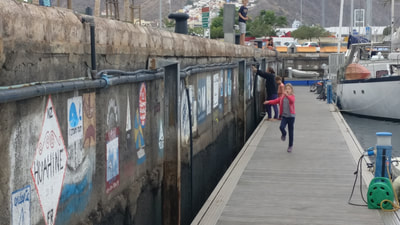

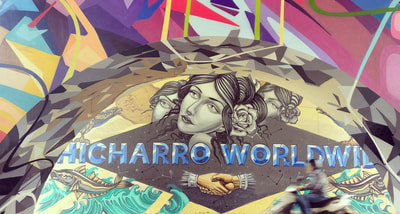
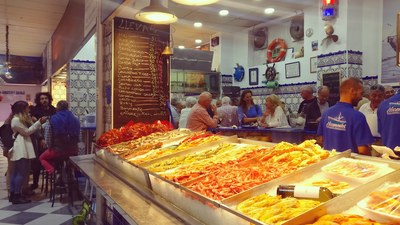

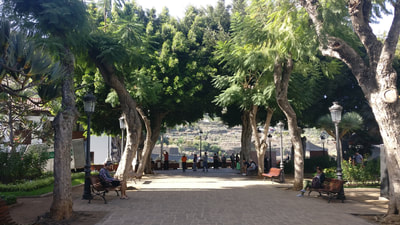

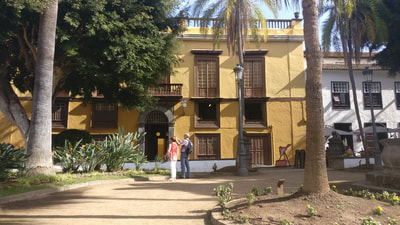
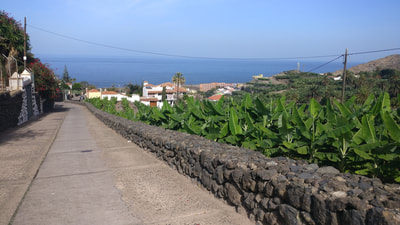

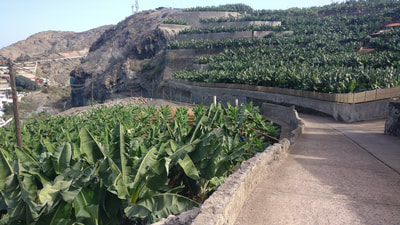



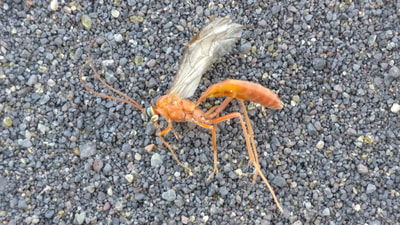



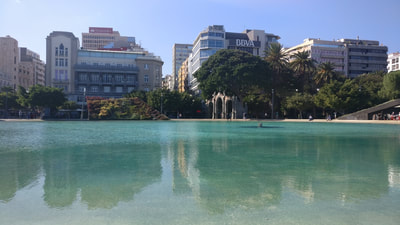


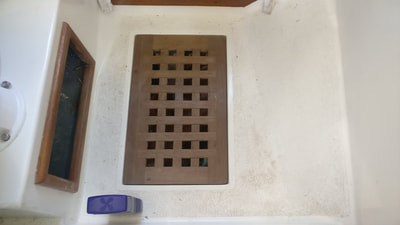
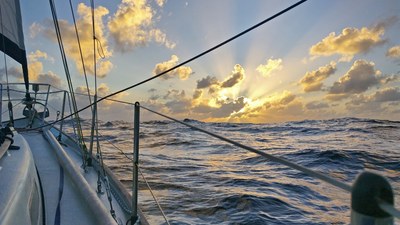


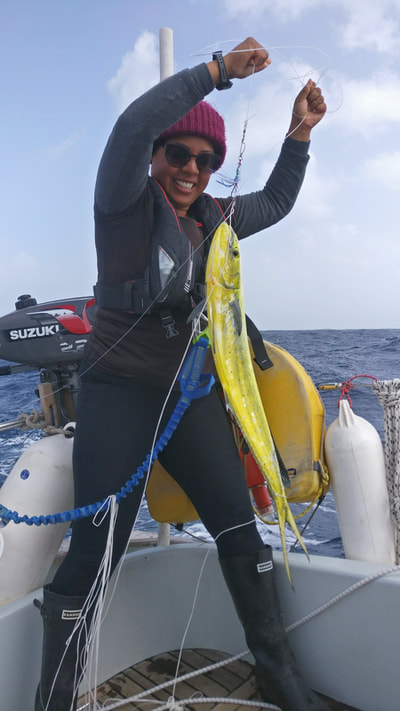
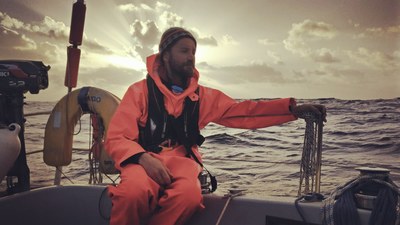
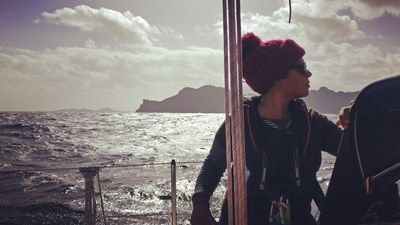
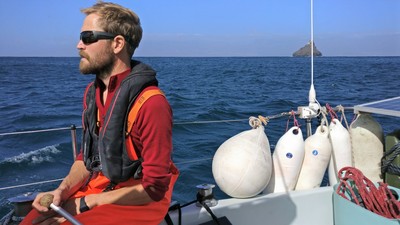




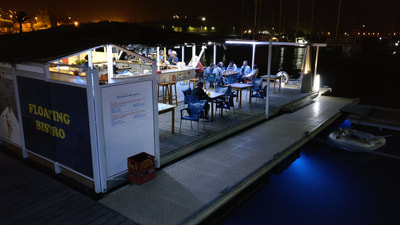
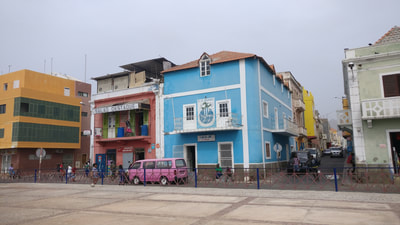


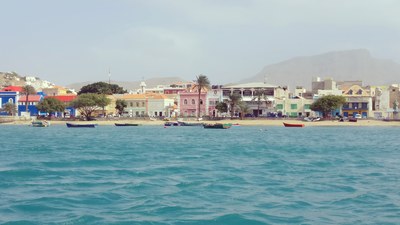

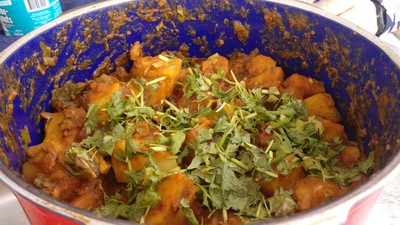

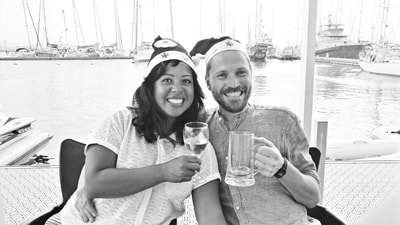
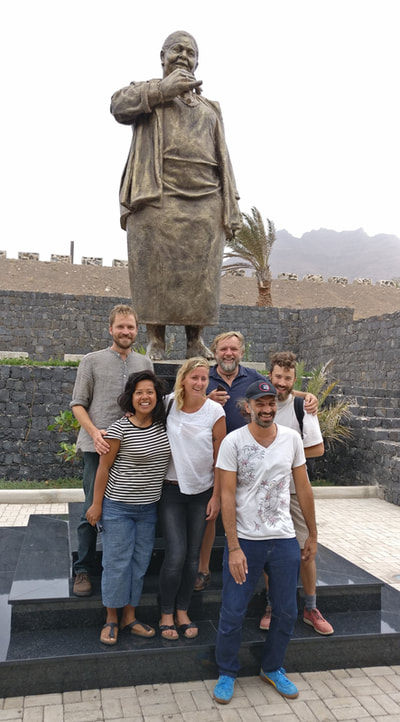
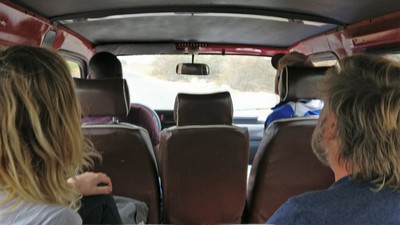


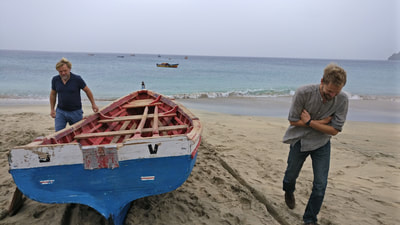


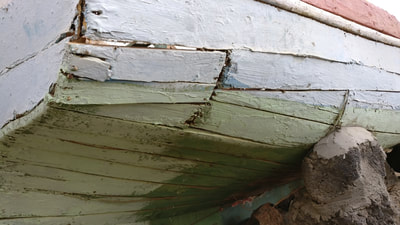

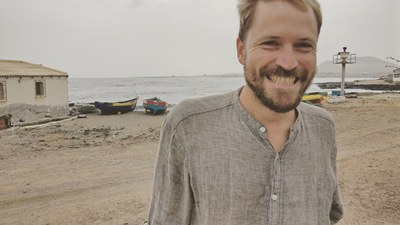
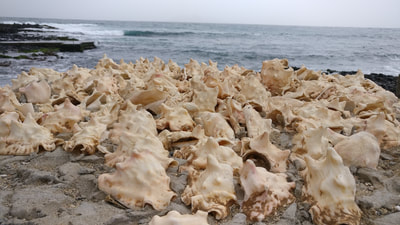

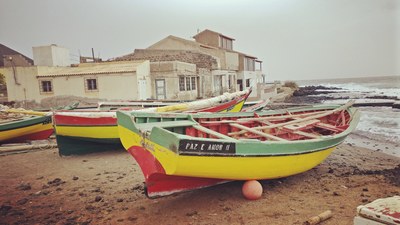
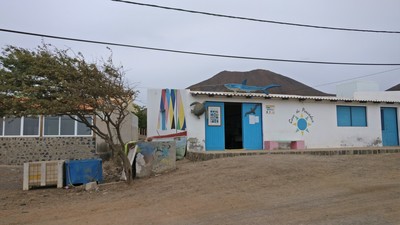

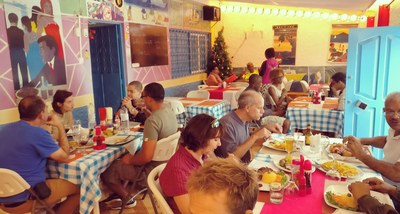



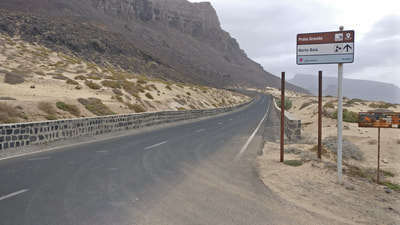
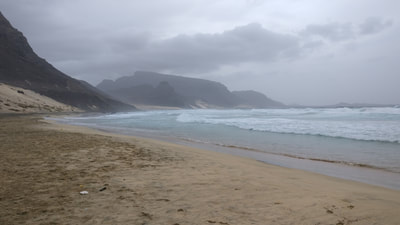

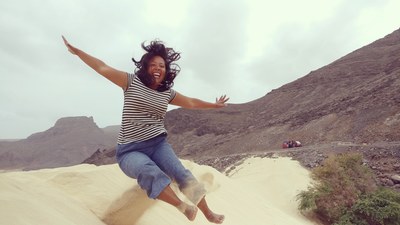


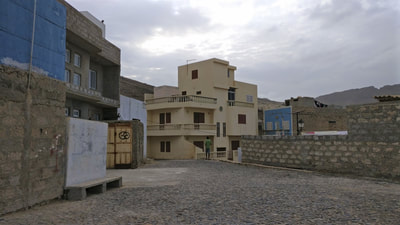



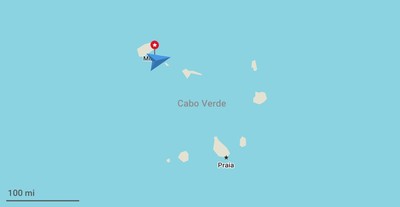
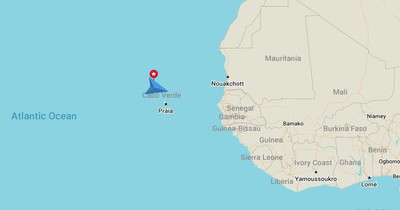
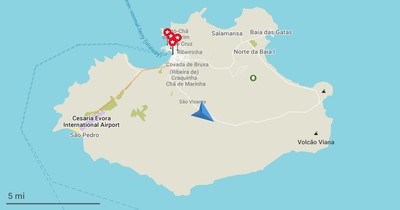
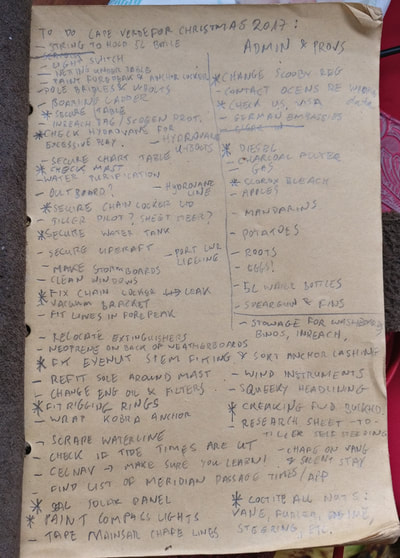


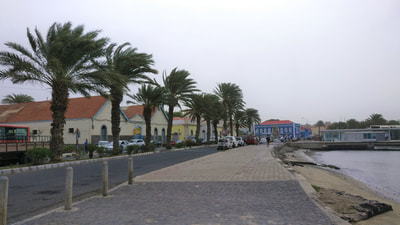




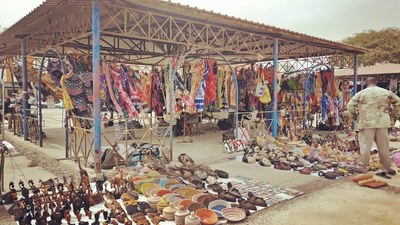




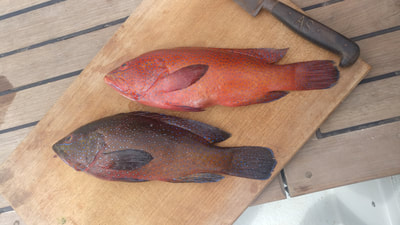
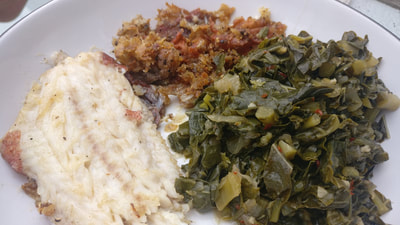

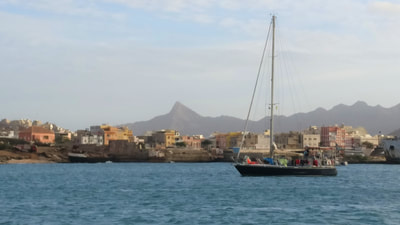
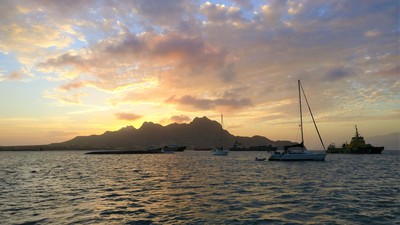
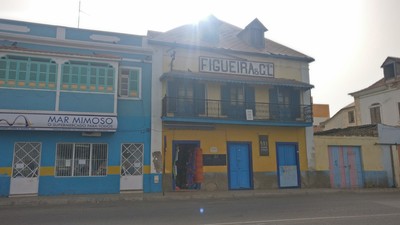

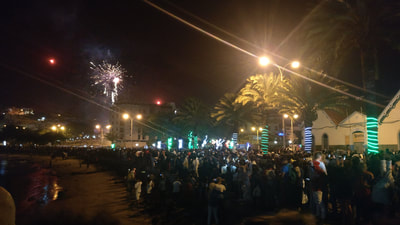
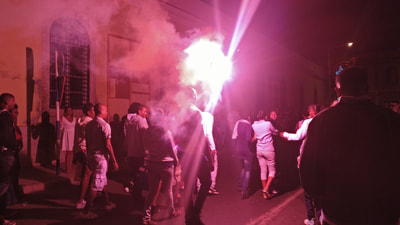

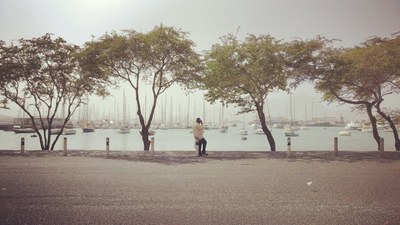

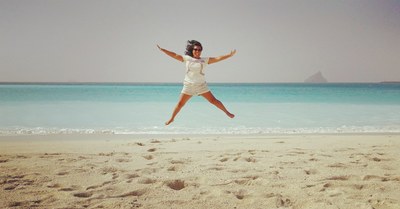




 RSS Feed
RSS Feed